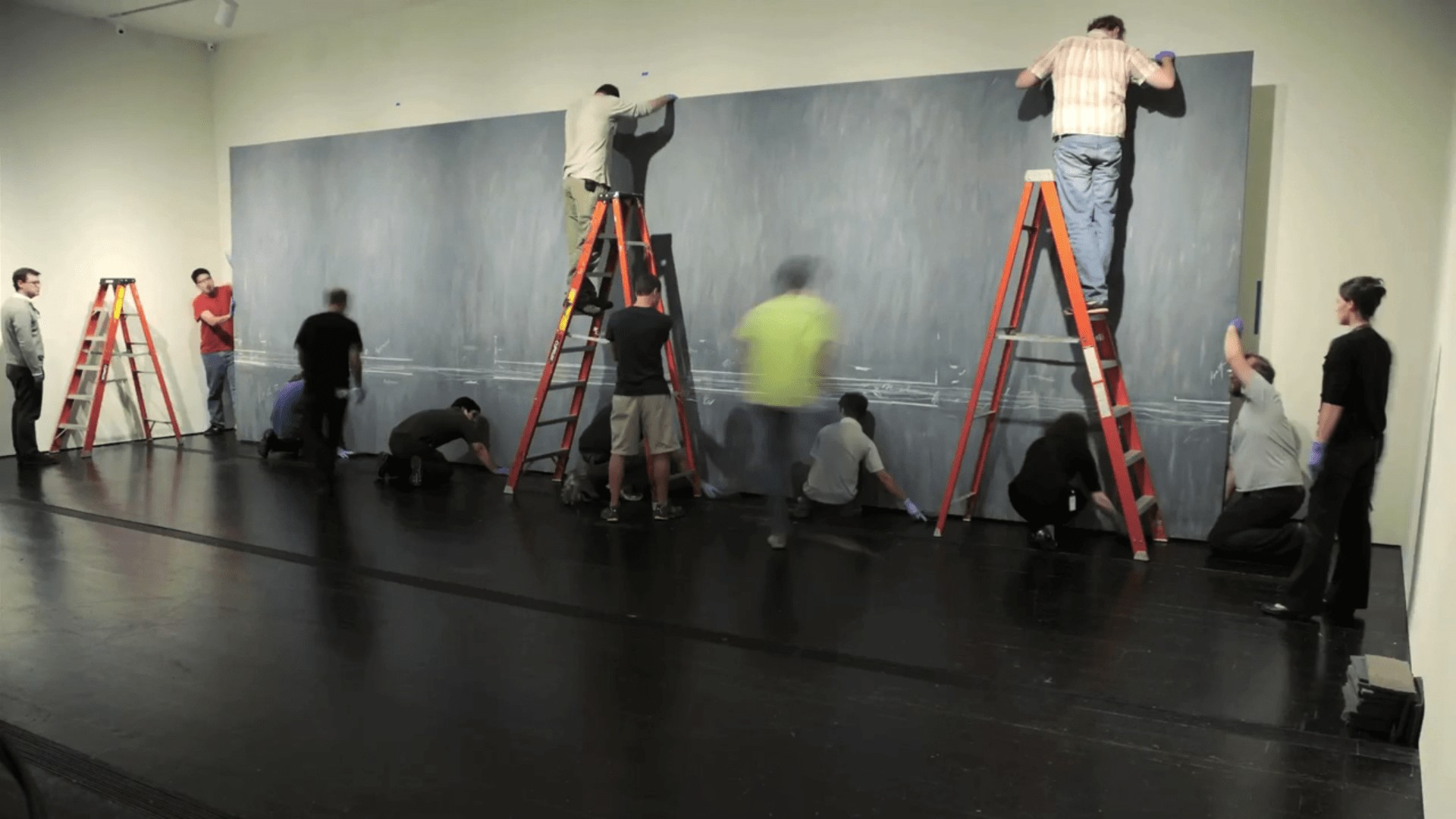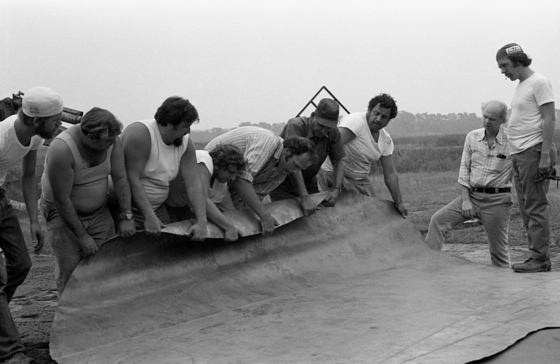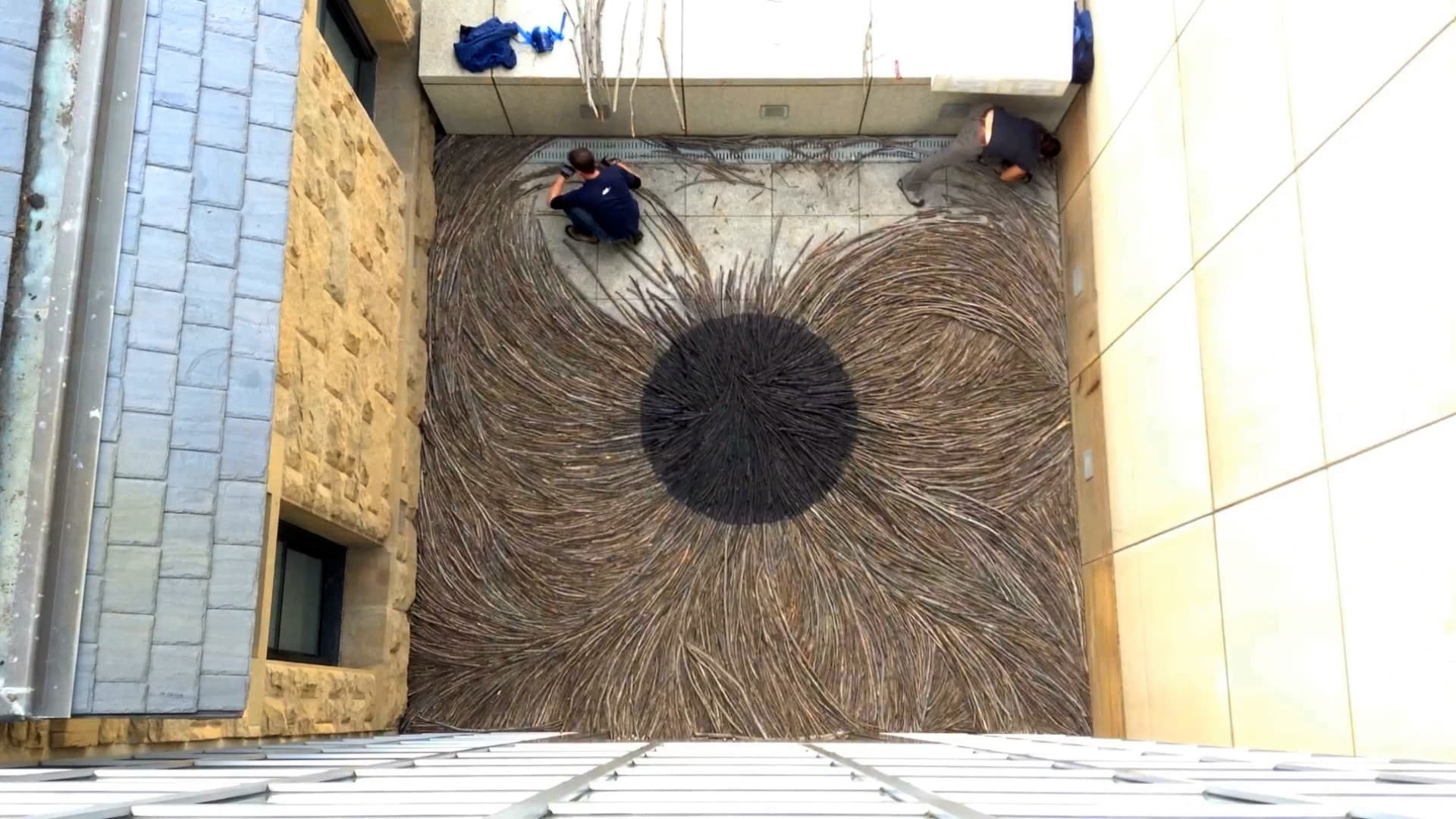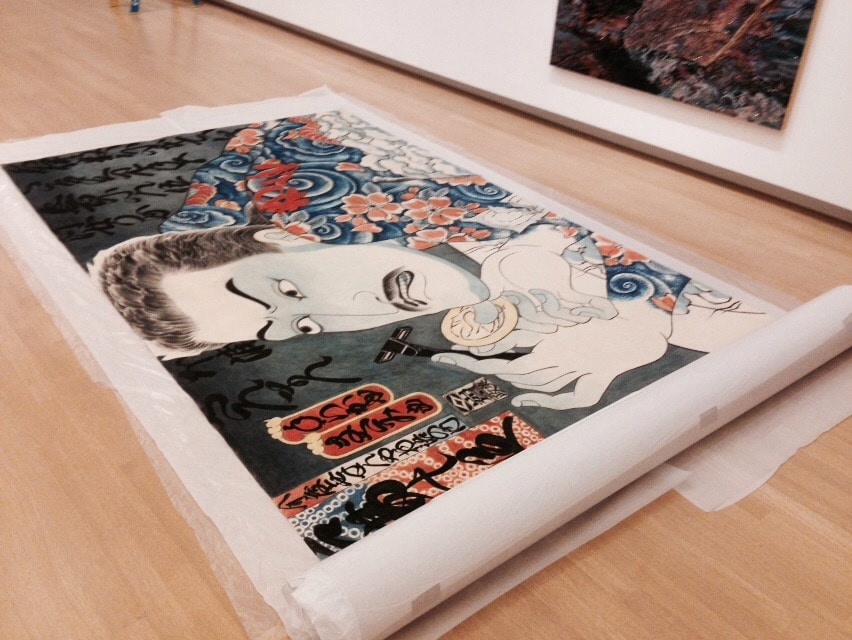The time-lapse format is always fun, but I think we can gain insight as well. If you have an installation for an artists and you can prepare yourself by looking at a time-lapse of the or a typical piece from that artists, well I think you’ll feel a bit more confident and prepared. You can pause and look at how many people are on the lift up, what tools do you see in the room, how much time to a lot, and so on.
This video was made during a three day install at the Menil Collection Museum, October 21-23, 2009, for Cy Twombly’s “Treatise on the Veil (Second Version)” 1970 [Rome]. The piece has to be shipped rolled on a tube due to it’s size, then stretched and attached to the canvas with velcro.
Images taken between every five and fifteen seconds.
Images played back at fifteen frames a second.
Music: Steve Reich – Six Pianos
[vimeo id=”12001860″ align=”center” autoplay=”no” grow=”yes”]
Treatise install time lapse from Adam Baker on Vimeo.
MENIL”S BIOGRAPHY (Menil.org)
The Menil Collection is an art museum located in Houston, Texas, USA, in a 30-acre neighborhood of art. The main building houses special exhibitions and the permanent collection, and it anchors a campus with three other museum buildings: two are dedicated to single artists (Cy Twombly and Dan Flavin) and another to year-long installation projects; a fourth building is under construction for a drawing institute. Known for displays that allow the objects and works of art to speak for themselves—there are no “didactics” on the wall or media in the galleries—the Menil philosophy is to foster each individual’s direct, personal encounter with works of art. The display of carefully chosen artworks in sympathetic settings are Menil hallmarks.
Loan shows and artist projects are the most visible exhibitions, featuring new perspectives and new scholarship and reflecting the stance of an artist-centered institution. The museum’s own collection—displayed in two-thirds of the main building and often rotated—is built around several types of art loved and collected from the 1940s to the 1990s by the Menil Collection’s founders, John and Dominique de Menil. Best known are the Surrealist and other modern European painting and sculpture. Also included are Byzantine and medieval art and artifacts; African, Pacific Islands, and Pacific Northwest Native art; art of the ancient Americas and the ancient Mediterranean and Near East. The collection area that has grown the most since the museum opened in June 1987 is American art since World War II.
Making art accessible is vital to the Menil’s mission, so no admission is charged and all public programs are free. All of the Menil campus buildings are entered at ground level, symbolic of its democratic ideals. The award-winning, landmark Menil Collection building of 1987 and the Cy Twombly Gallery (1995) were designed by architect Renzo Piano, who worked closely with Dominique de Menil to make the main building seem “small on the outside but large on the inside.” It is illuminated by changing natural light, bringing life to the artworks. The Twombly Gallery was designed in consultation with the artist and combines special sunlight baffles and unpainted plaster walls to create an Italianate glow for the paintings. The 1996 Dan Flavin installation was created for Richmond Hall, a 1930s commercial building rehabilitated for that purpose. The Byzantine Fresco Chapel, designed by Francois de Menil, housed two frescoes rescued for the Church of Cyprus and displayed from 1997 to 2012, when they were returned—the space reopened in 2015 with the first of a series of yearlong installations.
In 2009, David Chipperfield Architects was engaged to create a new master plan for the Menil campus. The plan recognizes as fundamental principles the meandering green spaces and dialogue between arts pavilions and residences and calls for more. The first projects to result in this plan are Stern and Bucek’s Bistro Menil and Michael Van Valkenburgh Associates’ gateway landscape and parking lot, all completed in 2014.
Scholarship is at the heart of the Menil enterprise. A conservation studio and a research library symbolically flank the public exhibition spaces, and the de Menils themselves commissioned several major research efforts. The conservation department safeguards and restores works of art, is known for studies of modern art materials and techniquesand helps train conservators. More visible to a global audience are exhibition- and collection-related books. Menil Collection activities have always encompassed the publication of art and the thought of leading scholars and critics. These include catalogues raisonné of the oeuvres of René Magritte and Max Ernst and the ambitious Image of the Black in Western Art series, the 10th and last volume of which was released in 2014 by Harvard University Press. The publishing program, unusually productive for a museum of its size, addresses international audiences, including many who may never visit the museum itself.
Public programs to attract, educate, and inspire diverse audiences are vital to the life of the Menil. Exhibiting artists lecture or perform; curators and scholars explore exhibitions, collections, and artworks; music, dance, and poetry performances are held; and there is an annual lecture that focuses on an artist in the collection and a symposium exploring a theme in a research fellow’s work. Programs are organized to foster conversation.
The Menil is also marked by the activism and spiritual pursuits of John and Dominique de Menil. It is a museum engaged with art for life’s sake, whether the witnessing of civil rights photography, the overt spirituality of Byzantine icons, or a contemplative art of an abstract sublime or a revelation of the unconscious. The museum and the campus aim to be an oasis in the midst of daily life that offers each viewer a moment to pause, reflect, and reinvigorate.
The Menil Collection does not aspire to be comprehensive. It strives instead for excellence in the distinct areas established by the collection, its founders, and successive curators and directors. A rigorous intellectual independence and a commitment to humane values are key criteria for program choices the museum makes. The Menil is a place where each visitor’s very singularity is valued: you are not told how to look, you are invited to imagine the possibilities of vision and contemplation.
Menil.org is one way to provide information, share research, and prompt insight to deepen the experience of art. We hope this website and related digital extensions will provide new platforms for exploring the Menil Collection’s mandate. It can complement looking at art in the museum or closer to your home. This is a space where the museum staff and collaborators reach out to digital visitors in ways that complement visiting the museum or reading one of our publications.






Leave a Reply
You must belogged in to post a comment.